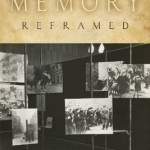Holocaust Memory Reframed: Museums and the Challenges of Representation
BookThis item doesn’t have any media yet
2014 | History & Politics
Holocaust memorials and museums face a difficult task as their staff strive to commemorate and document horror. On the one hand, the events museums represent are beyond most people's experiences. At the same time they are often portrayed by theologians, artists and philosophers in ways that are already known by the public. Museumadministrators and curators have the challenging role of finding a creative way to present Holocaust exhibits to avoid cliched or dehumanising portrayals of victims and theirsuffering. In Holocaust Memory Reframed, Jennifer Hansen-Glucklich examines representations in three museums: Israel's Yad Vashem in Jerusalem, Germany's Jewish Museum in Berlin and the United States Holocaust Memorial Museum in Washington, D.C. She describes a variety of visually striking media, including architecture, photography exhibits, artifact displays and video installations in order to explain the aesthetic techniques that the museums employ. As she interprets the exhibits, Hansen-Glucklich clarifies how museums communicate Holocaust narratives within the historical and cultural contexts specific to Germany, Israel and the United States.
In Yad Vashem, architect Moshe Safdie developed a narrative suited for Israel, rooted in a redemptive, Zionist story of homecoming to a place of mythic geography andrenewal, in contrast to death and suffering in exile. In the Jewish Museum in Berlin, Daniel Libeskind's architecture, broken lines and voids emphasise absence. Here exhibitscommunicate a conflicted ideology, torn between the loss of a Jewish past and the country's current multicultural ethos. The United States Holocaust Memorial Museumpresents yet another lens, conveying through its exhibits a sense of sacrifice that is part of the civil values of American democracy and trying to overcome geographic andtemporal distance. One well-know example, the pile of thousands of shoes plundered from concentration camp victims encourages the visitor to bridge the gap betweenviewer and victim. Hansen-Glucklich explores how each museum's concept of the sacred shapes the design and choreography of visitors' experiences within museum spaces. These spaces are sites of pilgrimage that can in turn lead to rites of passage.
Related Items:
| Published by | Rutgers University Press |
| Edition | Unknown |
| ISBN | 9780813563237 |
| Language | N/A |
Images And Data Courtesy Of: Rutgers University Press.
This content (including text, images, videos and other media) is published and used in accordance
with Fair Use.
